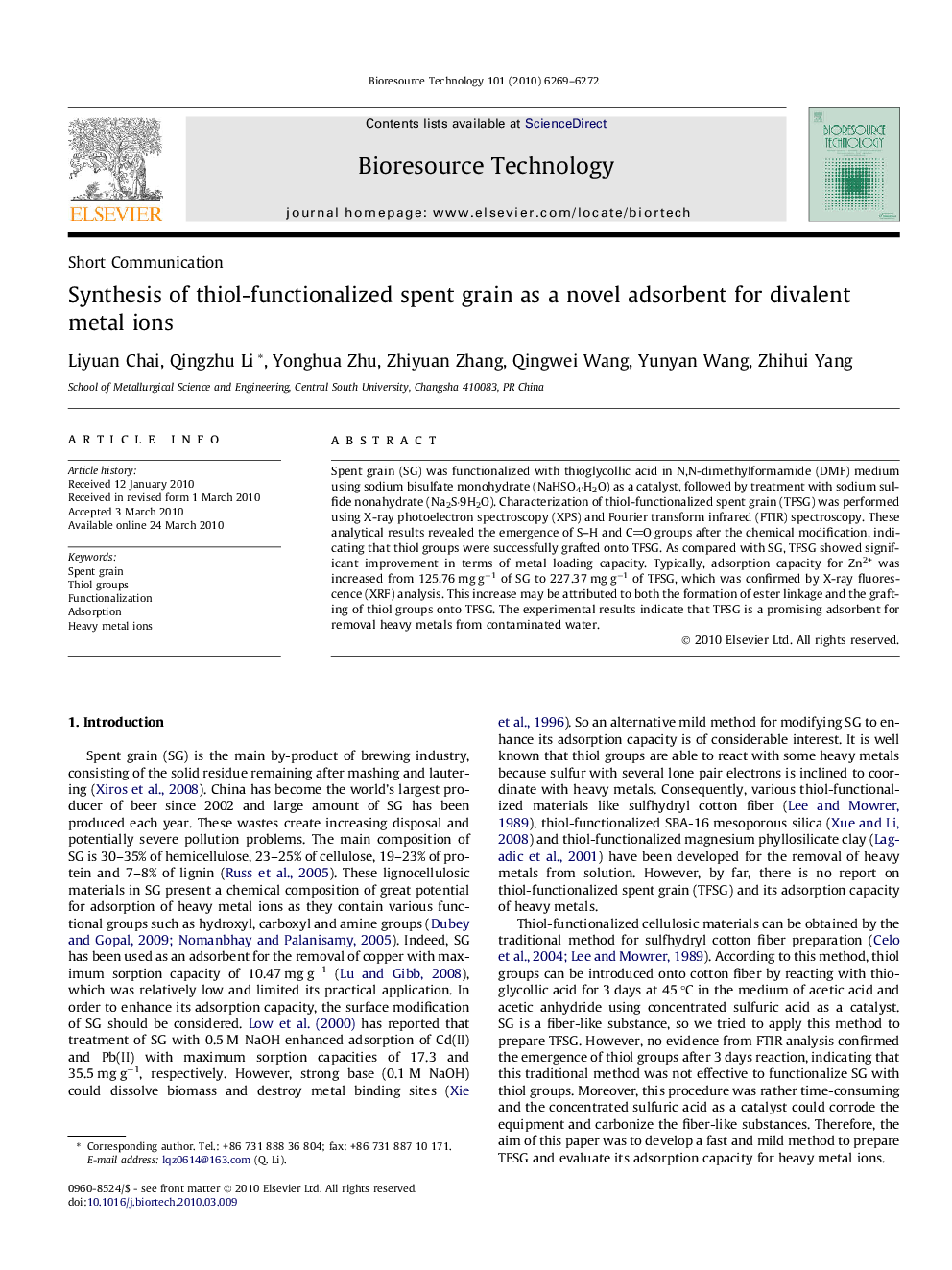| Article ID | Journal | Published Year | Pages | File Type |
|---|---|---|---|---|
| 682548 | Bioresource Technology | 2010 | 4 Pages |
Spent grain (SG) was functionalized with thioglycollic acid in N,N-dimethylformamide (DMF) medium using sodium bisulfate monohydrate (NaHSO4·H2O) as a catalyst, followed by treatment with sodium sulfide nonahydrate (Na2S·9H2O). Characterization of thiol-functionalized spent grain (TFSG) was performed using X-ray photoelectron spectroscopy (XPS) and Fourier transform infrared (FTIR) spectroscopy. These analytical results revealed the emergence of S–H and CO groups after the chemical modification, indicating that thiol groups were successfully grafted onto TFSG. As compared with SG, TFSG showed significant improvement in terms of metal loading capacity. Typically, adsorption capacity for Zn2+ was increased from 125.76 mg g−1 of SG to 227.37 mg g−1 of TFSG, which was confirmed by X-ray fluorescence (XRF) analysis. This increase may be attributed to both the formation of ester linkage and the grafting of thiol groups onto TFSG. The experimental results indicate that TFSG is a promising adsorbent for removal heavy metals from contaminated water.
